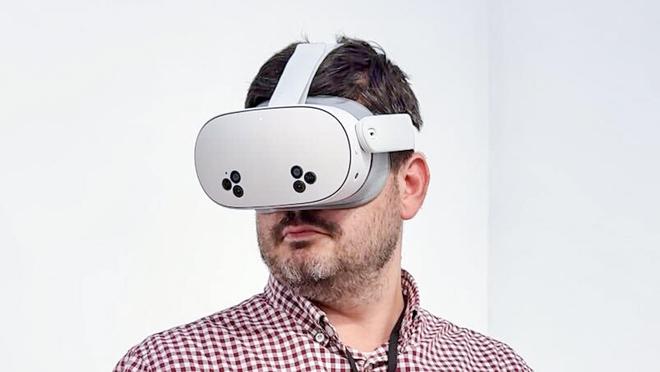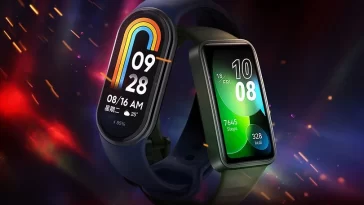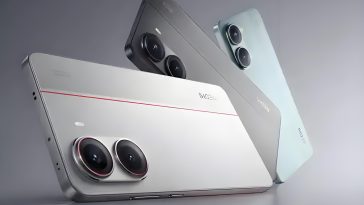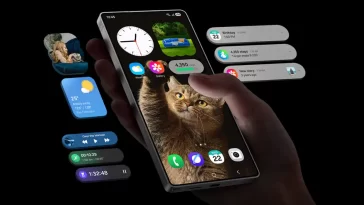Since the official release of Meta Quest 3 at the Meta Connect conference, as the product has been shipped recently, relevant reviews have emerged. As a senior technology writer, Duncan Robertson made a positive evaluation of Quest 3, saying that “a new generation of VR products is heating up”. He said that overall, Meta Quest 3 inherits the excellent gaming features of Oculus Quest 2 and brings it the latest XR mixed reality features.
Although it is an improvement over Quest 2, the two smart devices feel different, especially some eye-catching features that can make users feel the leap of technology, but he does not think that Quest 3 will make Quest 2 obsolete. On the contrary, Duncan believes that Quest 3 may even strengthen its position in the market.
In fact, Meta Quest 3 feels like the pinnacle of a year in the field of VR. Although PSVR2 was launched in February, it only reconfirmed that VR is an emerging and special way to experience video games, but the release of Apple Vision Pro has attracted more mainstream attention. Everyone, even some people who don’t understand the technology industry, may see the significance of Apple Vision Pro for the future and are excited about it.
Quest 3 is very much Meta’s response to “Apple-shaped excitement”. However, as the successor to Quest 2, Quest 3’s iteration and update is more like a cross-level significance.
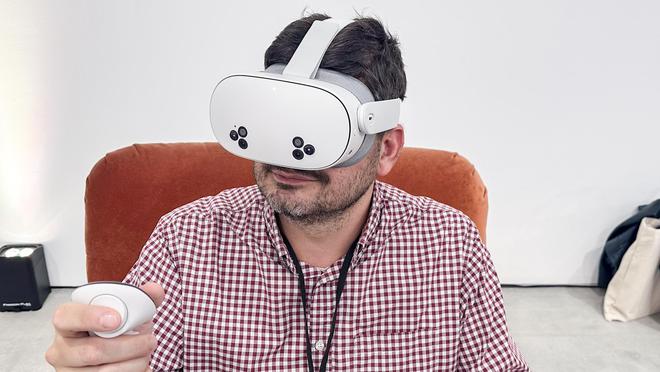
For many headset enthusiasts, one look at Quest 3 is enough to be fascinating. I have to admit that its appearance design is indeed beautiful, and its slim waistline is almost incomparable to the now bulky Quest 2. On the surface, this is an updated streamlined headset. In addition to the new design with three central camera modules, most of the Quest 3 feels almost the same as Quest 2. The headband is still the same design, the speakers are integrated into the side, and the facial interface feels basically unchanged.
As a result, the comfort and fit of the two headsets do feel surprisingly similar. If there is a difference, it is that the facial padding of Quest 2 may be more luxurious. However, because Meta’s best Meta Quest 2 accessories come from third parties, this time it provides the most comfort in the paywall area of its larger accessory series.
However, the central headband now seems easier to adjust because the two adjacent rings can be separated or slid together well. The center headband might be a little uncomfortable if you need to protect your hair.
The Quest 3‘s speakers are slightly thicker than the Quest 2’s, and a lot of marketing has gone into selling the headset’s 3D audio, but it does mean you’ll feel more pressure on the sides of your head, especially if you wear glasses. On the left side of the headband, there’s the USB-C connection port for charging, just above the power button. The right side has a 3.5mm headset jack for connecting one of the best gaming headsets. There’s a small dial on the bottom for controlling interpupillary distance, as well as a volume rocker and a magnetic connector for placing the headset on the charging dock.
The controllers look and feel almost identical to their Quest 2 counterparts, right down to the way the buttons press. Without the tracking rings, they make far less clicking noises during gameplay, which feels like a bonus. Even their wristbands are nearly identical, and annoyingly, they have the same tendency to come loose during intense gaming challenges.
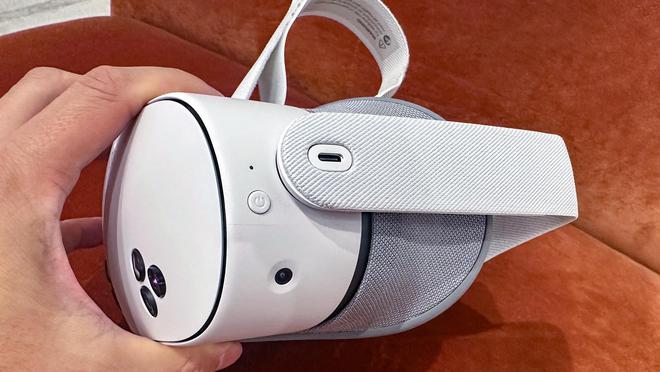
The display is where you’ll probably notice the biggest difference between the Meta Quest 3 and its predecessor. In Duncan’s opinion, the Quest 3 not only increases focus, but actually helps field of view, as their shape means you’ll see less of the headset’s black bezels and your eyes can be drawn more to the display in front of you.
Again, the 120Hz refresh rate feels smooth. It’s worth noting that games and apps from previous Quest headsets all work, and most games look just as smooth as they do on the Quest 2, presumably because any Quest 3 patches are expected to be released some time from now.
The Quest 3 runs Qualcomm’s Snapdragon XR2 Gen 2 processor, which consistently delivers a stutter-free experience. The Quest 2 occasionally stuttered in more demanding games, but that never happened with the Quest 3.
Another thing that’s amazing is the clarity of the Quest 3’s pass-through cameras. Once you put on the headset and see your surroundings, you’ll notice a huge improvement in clarity. You’ll also be impressed by the full color displayed by those RGB cameras, presumably because the Quest 3 still uses an LCD display, rather than the PlayStation’s OLED.
The resolution of this headset is interesting. Colors look more vivid and there are fewer jagged lines, but all in all, the resolution per eye isn’t as amazing as one might think.
Annoyingly, there’s no eye tracking on the Quest 3, which really feels like a missing feature. Foveated rendering could help deliver more of a graphical leap over the Quest 2, but in terms of future-proofing, the Quest 3 may not sell as well as expected without eye tracking, which is unique in the industry.
Quest 3’s nominal battery life is 2.2 hours, which is about the same as Quest 2. That’s actually OK. The average experiencer won’t usually extend VR gaming time for more than an hour or so, although the life of the onboard battery remains to be seen.
Like the Quest 2 before it, the Meta Quest 3 is an excellent VR gaming device. First, the Quest 3 is fully backwards compatible with Quest 2 games, which is a disadvantage for the PSVR 2. This gives experiencers access to hundreds of VR games and probably the most powerful all-round VR game library available, except for the best gaming PCs. Thanks to those high-definition pass-through cameras, room tracking is on par with the PSVR 2, making it the fastest and best tracking headset on the market. Whether I’m playing tennis in VR, repairing vehicles in Car Mechanic Simulator, or role-playing as John Wick in Pistol Whip, the Meta Quest 3 delivers a coherent VR experience.
Another highlight is its 3D audio. By switching between the Black Magic levels in Pistol Whip on Quest 3 and Quest 2, Duncan found a pretty amazing difference in the level of audio quality. The Quest 3’s speakers are more powerful, more accurate, and very well balanced. They also do a good job of conveying positional audio and manage to show the difference between reverberation and compressed sounds without irritating the user’s eardrums.
Meanwhile, the haptic feedback in the controllers is as good as ever. While they may not feel any different than on Quest 2, they are still precise and help to experience games like Eternal Dungeon. The Quest 3 really does feel immersive, and the controllers are a big part of that.
Social features are still a relatively new technology for XR devices, and the reason for asking this question is that Apple and Meta have now made the beginning of the “spatial computing era” for us, which makes the public feel as if they are at the crossroads of how mixed reality fits into our society. For this reason, Duncan does think it is important to keep the data mining and structuring that Meta has established for its social media platform.

